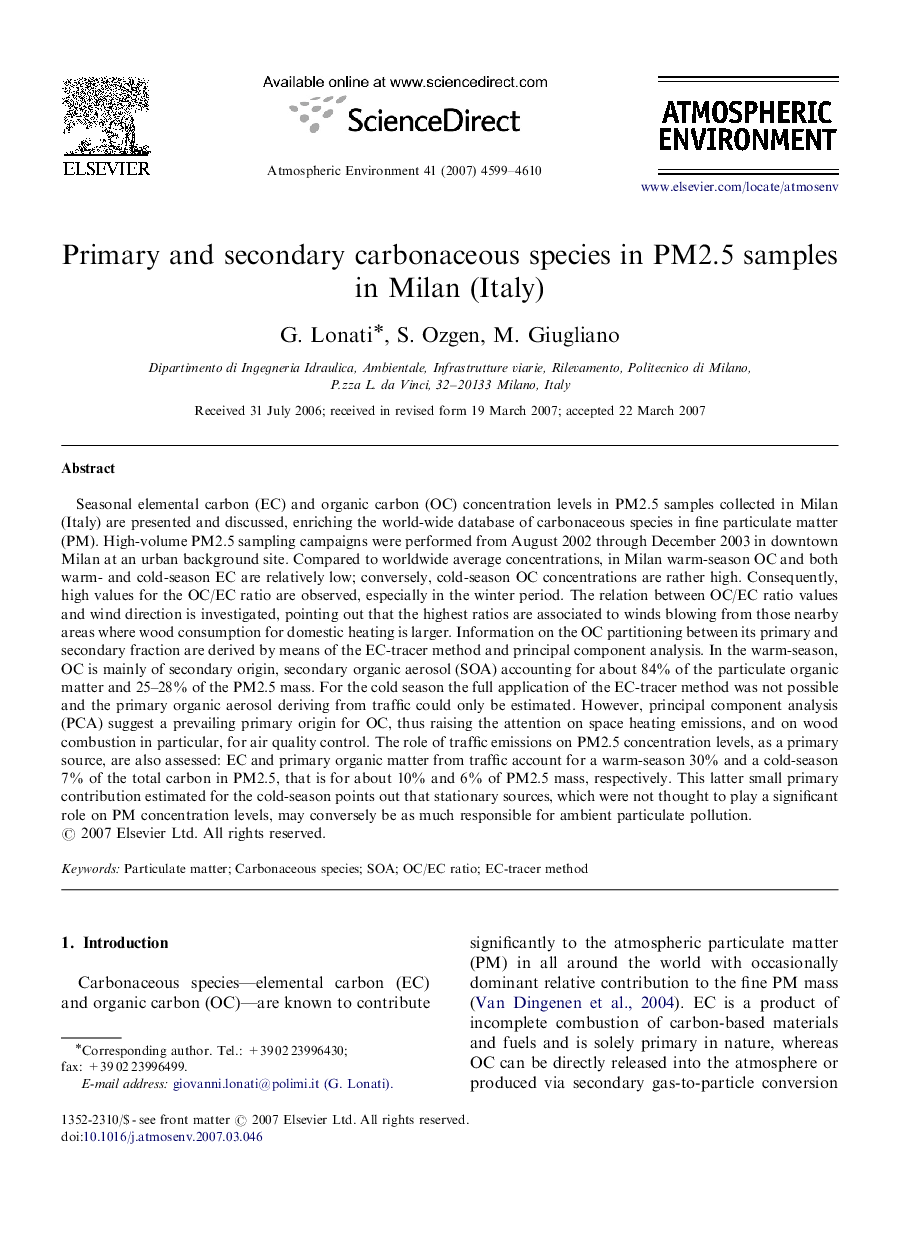| کد مقاله | کد نشریه | سال انتشار | مقاله انگلیسی | نسخه تمام متن |
|---|---|---|---|---|
| 4443528 | 1311197 | 2007 | 12 صفحه PDF | دانلود رایگان |

Seasonal elemental carbon (EC) and organic carbon (OC) concentration levels in PM2.5 samples collected in Milan (Italy) are presented and discussed, enriching the world-wide database of carbonaceous species in fine particulate matter (PM). High-volume PM2.5 sampling campaigns were performed from August 2002 through December 2003 in downtown Milan at an urban background site. Compared to worldwide average concentrations, in Milan warm-season OC and both warm- and cold-season EC are relatively low; conversely, cold-season OC concentrations are rather high. Consequently, high values for the OC/EC ratio are observed, especially in the winter period. The relation between OC/EC ratio values and wind direction is investigated, pointing out that the highest ratios are associated to winds blowing from those nearby areas where wood consumption for domestic heating is larger. Information on the OC partitioning between its primary and secondary fraction are derived by means of the EC-tracer method and principal component analysis. In the warm-season, OC is mainly of secondary origin, secondary organic aerosol (SOA) accounting for about 84% of the particulate organic matter and 25–28% of the PM2.5 mass. For the cold season the full application of the EC-tracer method was not possible and the primary organic aerosol deriving from traffic could only be estimated. However, principal component analysis (PCA) suggest a prevailing primary origin for OC, thus raising the attention on space heating emissions, and on wood combustion in particular, for air quality control. The role of traffic emissions on PM2.5 concentration levels, as a primary source, are also assessed: EC and primary organic matter from traffic account for a warm-season 30% and a cold-season 7% of the total carbon in PM2.5, that is for about 10% and 6% of PM2.5 mass, respectively. This latter small primary contribution estimated for the cold-season points out that stationary sources, which were not thought to play a significant role on PM concentration levels, may conversely be as much responsible for ambient particulate pollution.
Journal: Atmospheric Environment - Volume 41, Issue 22, July 2007, Pages 4599–4610